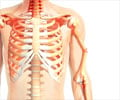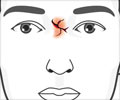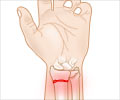Alberta University researchers have now developed a new tool to determine if height loss is due to osteoporosis or normal part of aging.
Alberta University researchers have now developed a new tool to determine if height loss is due to osteoporosis or normal part of aging. The test is as simple as asking the patient about his/her tallest height and deducting it from the present height. This would provide a rough idea of any height loss.
When this calculation approximates to 6cm (difference between recalled height and present height), then it is more likely to be a result of vertebral fractures (60%). In this case, radiological examination in the form of X-rays can be taken to confirm the diagnosis.Vertebral fracture, is a common manifestation of osteoporosis and is hard to detect as it is painless. For this reason, it is often called the silent thief. Symptoms are not seen unless it occurs in a big bone such as the wrist or hip.
It is a reliable osteoporosis indicator as once it is diagnosed, suitable drugs can be given to delay onset of the disease. The authors recommend that all women above age 50 should be aware of their loss in height, if any. The results of this interesting study can be found in the Osteoporosis International journal.
Simple self-examination measures can be used for early detection of osteoporosis. One is placing two fingers between the lowest rib and the pelvis. If there is difficulty in doing this, there is a 60% chance of vertebral fractures. Alternatively, the patient can be made to stand naturally (heels paced against the wall). The distance between the head and the wall can then be measured. If this exceeds 6cm, there is a greater possibility of vertebral fractures.











